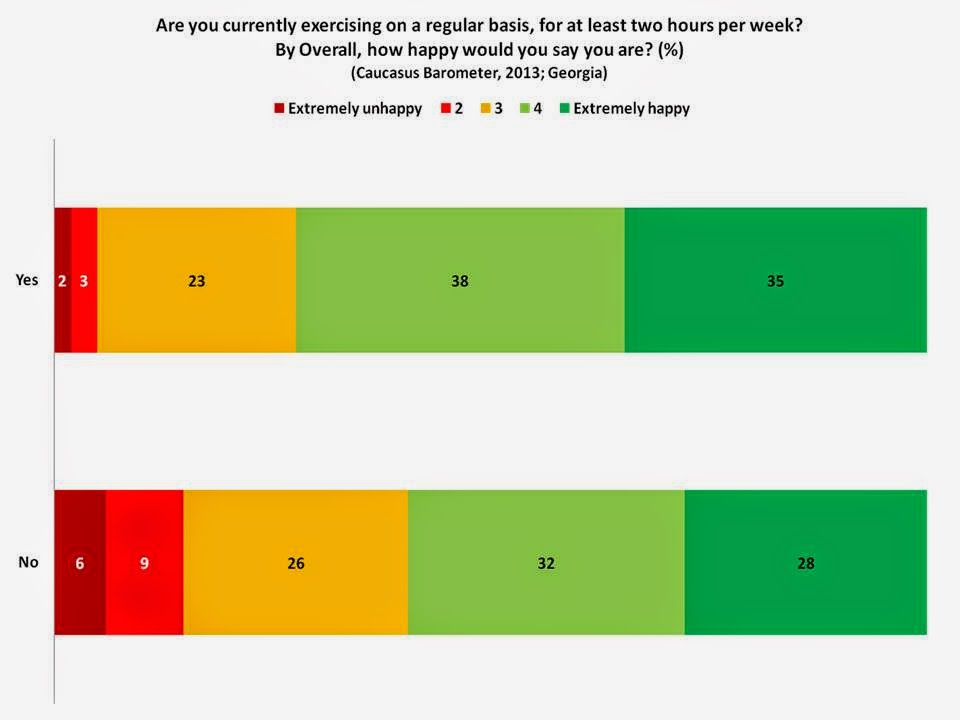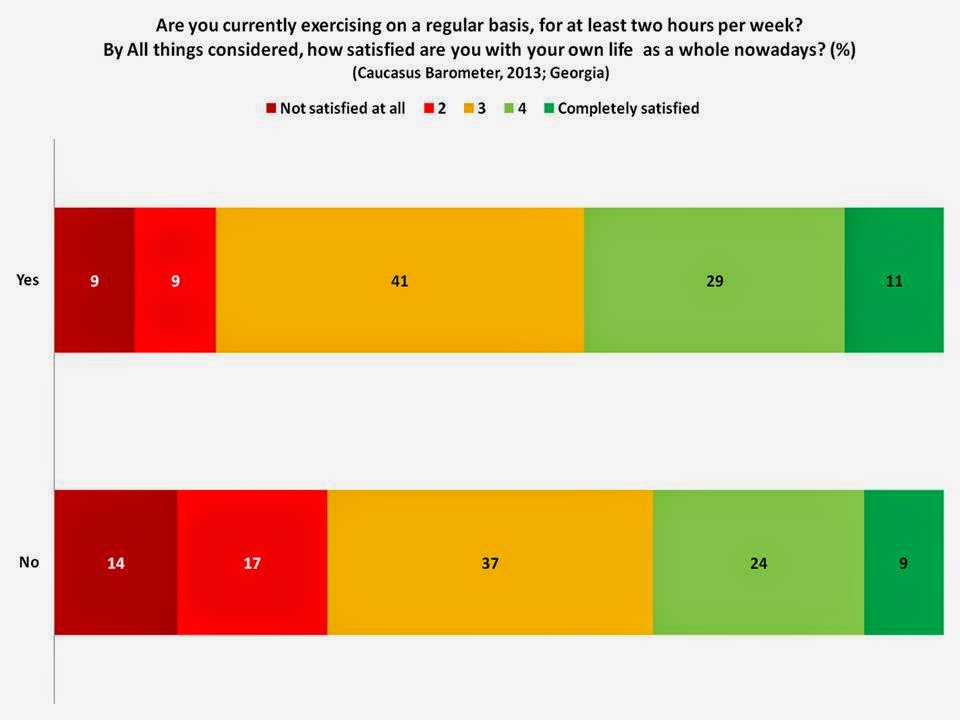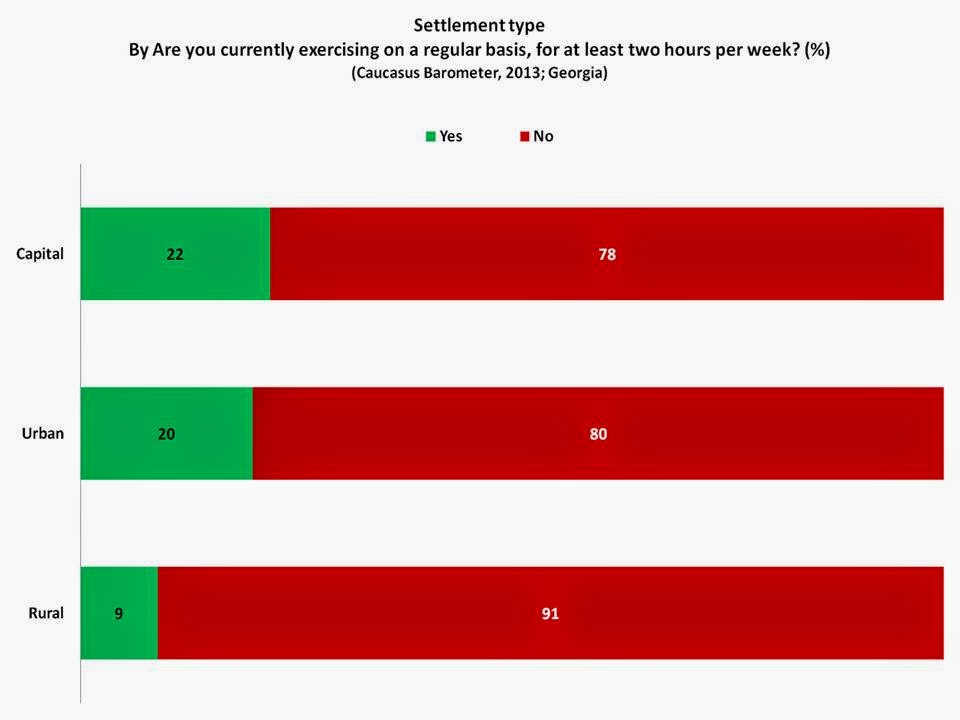Despite the benefits of physical exercise, the percentage of Georgians who exercise on a regular basis is low, as is the case in the US and the EU. According to CB, 16% of the Georgian population exercises on a regular basis for at least two hours per week, and men (22%) are twice as likely to engage in regular physical activity as women (10%).
Interestingly, 35% of those who exercise regularly for at least two hours per week consider themselves extremely happy and another 38%, happy. This is a slightly higher share compared with those who do not exercise. Only 5% of exercisers report being unhappy, while 15% of those who do not exercise report being unhappy.
 Note: A 10-point scale was used to record respondents’ answers to the question “Overall, how happy would you say you are?” For the chart above, the original scale was recoded to a 5-point scale, so that codes ‘1’ and ‘2’ were grouped into “Extremely unhappy”, codes ‘3’ and ‘4’ into category ‘2’, codes ‘5’ and ‘6’ into category ‘3’, codes ‘7’ and ‘8’ into category ‘4,’ and codes ‘9’ and ‘10’ into “Extremely happy.” Options “Do not know” and “Refuse to answer” were excluded from the analyses.
Note: A 10-point scale was used to record respondents’ answers to the question “Overall, how happy would you say you are?” For the chart above, the original scale was recoded to a 5-point scale, so that codes ‘1’ and ‘2’ were grouped into “Extremely unhappy”, codes ‘3’ and ‘4’ into category ‘2’, codes ‘5’ and ‘6’ into category ‘3’, codes ‘7’ and ‘8’ into category ‘4,’ and codes ‘9’ and ‘10’ into “Extremely happy.” Options “Do not know” and “Refuse to answer” were excluded from the analyses.
Furthermore, people who are physically active appear to be slightly more satisfied with their lives than those who do not exercise. According to the graph below, out of those who exercise, 40% say they are satisfied with their lives, while this number decreases to 33% among Georgians who do not exercise on a regular basis. The difference is more distinct for those who report not being satisfied with their lives: 18% of those who exercise report not being satisfied compared with 31% of those who do not exercise.
Note: A 10-point scale was used to record respondents’ answers to the question “All things considered, how satisfied are you with your life nowadays?” For the chart above, the original scale was recoded to a 5-point scale, so that codes ‘1’ and ‘2’ were grouped into “Not satisfied at all”, codes ‘3’ and ‘4’ into category ‘2’, codes ‘5’ and ‘6’ into category ‘3’, codes ‘7’ and ‘8’ into category ‘4,’ and codes ‘9’ and ‘10’ into “Completely satisfied”. Options “Do not know” and “Refuse to answer” were excluded from the analyses.According to the data, residents of the capital and other urban settlements are more physically active than those living in rural settlements; 22% of people living in Tbilisi and 20% of people living in other urban settlements exercise on a regular basis, while only 9% of the rural population reports exercising on a regular basis.
To summarize, the percentage of Georgians who engage in regular physical exercise is not much different from the populations of the US or EU countries. It appears that the level of happiness and life satisfaction are higher among Georgians who work out regularly. If you would like to explore issues related to physical activity and the level of happiness and life satisfaction in the South Caucasus further, please visit the CRRC website or look at the data using our Online Data Analysis tool.


